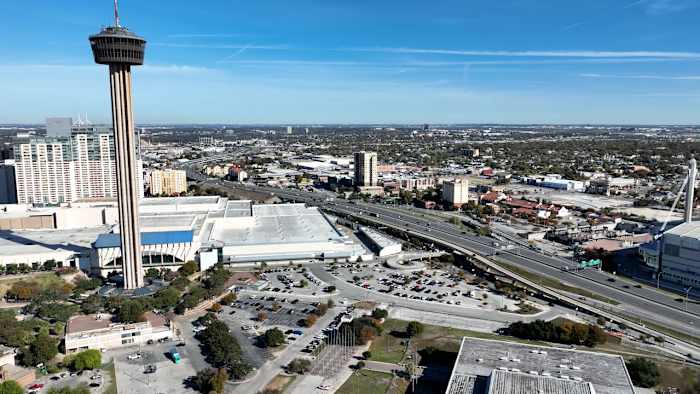SAN ANTONIO – San Antonio is considered among the fastest-sinking cities in the United States, according to a geologic study.
The study, published May 8 in the journal Nature Cities, detailed the precarious positions of the 28 largest cities, per 2020 U.S. Census data, with high land subsidence rates.
Researchers described land subsidence as “a slow-moving hazard with adverse environmental and socioeconomic consequences worldwide.”
While land subsidence is typically thought of as a problem for coastal or coastal-adjacent cities such as Houston or New Orleans, land subsidence can also negatively affect “inland urban areas” such as San Antonio or Dallas, which can increase the likelihood of flooding, damage to buildings and disruption to mass transit systems.
Of the 28 cities included in the study, six cities — Houston, San Antonio, Dallas, Austin, Fort Worth and El Paso — are located in the Lone Star State. Besides Texas, the other states with more than one city represented are California (four cities: Los Angeles, San Diego, San Jose and San Francisco) and Tennessee (two cities: Memphis and Nashville).
Researchers then generated “high spatial resolution” maps that help determine an equation for each city’s vertical land motion standards, or VLM.
According to the study, 25 of the 28 cities are considered sinking with negative VLMs measured in millimeters. Researchers said Houston is far and away the fastest-sinking city in the United States (-5.216 millimeters/year).
Among other large Texas cities, San Antonio is sinking at more than 1 millimeter per year (-1.099), but the Alamo City’s estimated sinking level does not compare to levels in Fort Worth (-4.366 millimeters/year) or Dallas (-3.846 millimeters/year).
Austin (-0.792) and El Paso (-0.754) are both considered sinking at less than 1 millimeter per year, researchers determined.
The only three cities the study does not consider to be sinking are Jacksonville, Florida (+0.452 millimeters/year); San Jose, California (+0.219 millimeters/year) and Memphis, Tennessee (+0.006 millimeters/year).
The study also evaluated the risk of land subsidence to approximately 5.6 million buildings in these cities. Based on researchers’ results, land subsidence appears to affect buildings in San Antonio worse than any other city surveyed.
Researchers said the Alamo City’s ratio of high/very-high-risk buildings to total buildings in the city is 1 to 45, which is considered the worst such ratio. Austin (1 in 71) and Fort Worth (1 in 143) had the second and third-worst ratios among the 28 cities surveyed, the study found.
The study is not all doom and gloom, however. While there is no cure-all to combat land subsidence and win, researchers said actions such as building restrictions in high-risk areas, reinforcing critical infrastructure and continuous monitoring of subsidence levels are effective ways cities can respond to help keep citizens and the environment safe.
Read also:
Copyright 2025 by KSAT – All rights reserved.


